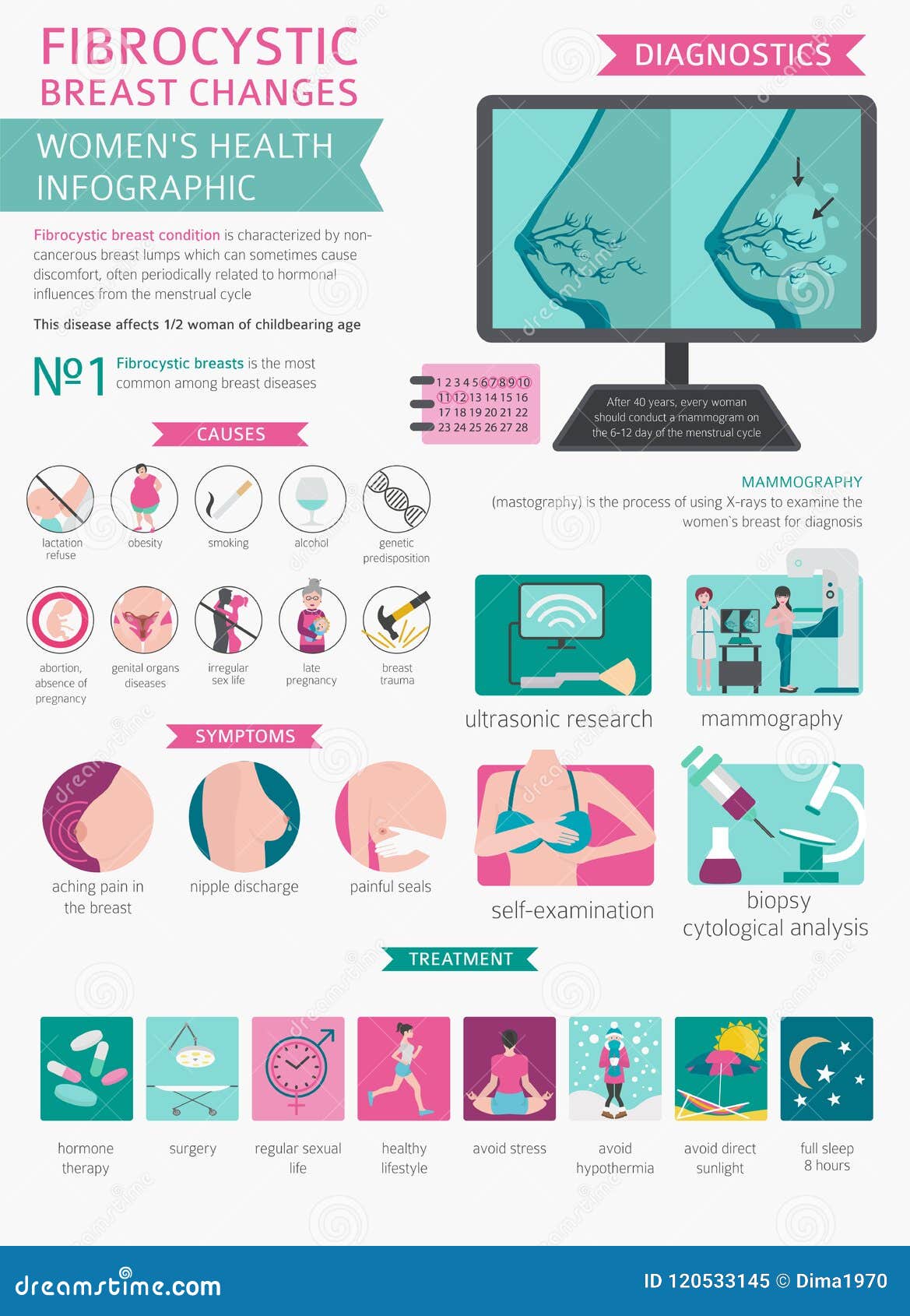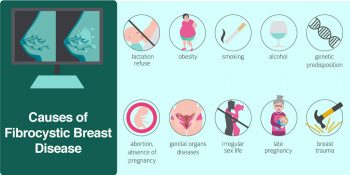

Fibrocystic breast changes are the most common benign breast changes, found in 50% of women undergoing clinical examination and 90% of women undergoing histopathological examination. Studies have shown that approximately half of women who visit clinics with breast-related symptoms are affected by benign breast disorders, e.g., fibrocystic changes which occur in 50% of patients over the age of 30 years. Breast complaints account for a significant proportion of women's health problems with a prevalence of 16% to 50% in various reports. In this guideline, PCOS was defined as the presence of hyperandrogenism and one or both features of oligo/amenorrhea and polycystic ovaries on sonography. Later in 2006, the AES guideline was developed for PCOS diagnosis. In 2003, the Rotterdam system defined PCOS as the presence of two out of three criteria of clinical/laboratory evidence of hyperandrogenism, oligo/amenorrhea, and the polycystic ovaries on sonography. In 1990, the NIH guideline was proposed for the diagnosis of PCOS with two criteria of oligo/amenorrhea and clinical/laboratory findings of hyperandrogenism. There are three types of diagnostic systems for PCOS: the NIH guideline, the Rotterdam system, and the AES guideline. This population is also at an increased risk of acanthosis nigricans, type 2 diabetes mellitus, dyslipidemia, visceral obesity, cardiovascular diseases, and endometrial cancer. Patients with PCOS are at risk for a wide range of endocrine and metabolic disorders, including insulin resistance (IR) and the metabolic syndrome.

Patients may also experience irregular bleeding and infertility. Clinical symptoms of this syndrome include hirsutism, acne, and alopecia. The prevalence of this disease based on different diagnostic criteria, including the ones of the National Institutes of Health (NIH), the Rotterdam, and the Androgen Excess and PCOS Society (AES), is estimated between 9 and 18%, the highest rate of which belongs to Western societies. Cysts are small fluid-filled sacs that can develop in the breast.Polycystic ovary syndrome (PCOS) is the most common hormonal disorder of women in the childbearing age and the leading cause of hyperandrogenism and ovulation disorders which cause impaired fertility. Fibrocystic condition causes noncancerous changes in the breast that can make them lumpy, tender, and sore. The two most common causes of breast lumps are fibrocystic breast condition and cysts. But most breast lumps are caused by other medical conditions. Many conditions can cause lumps in the breast, including cancer. For more information, see the National Cancer Institute’s Breast Changes and Conditions. The way your breasts look and feel can be affected by getting your period, having children, losing or gaining weight, and taking certain medications. Most women say their breasts feel lumpy or uneven.

What is normal for you may not be normal for another woman. If you have any signs or symptoms that worry you, be sure to see your doctor right away. Keep in mind that these symptoms can happen with other conditions that are not cancer. Any change in the size or the shape of the breast.Nipple discharge other than breast milk, including blood.Pulling in of the nipple or pain in the nipple area.
#Fibrocystic breast changes skin#
Redness or flaky skin in the nipple area or the breast.Thickening or swelling of part of the breast.New lump in the breast or underarm (armpit).Some people do not have any signs or symptoms at all. Different people have different symptoms of breast cancer.


 0 kommentar(er)
0 kommentar(er)
